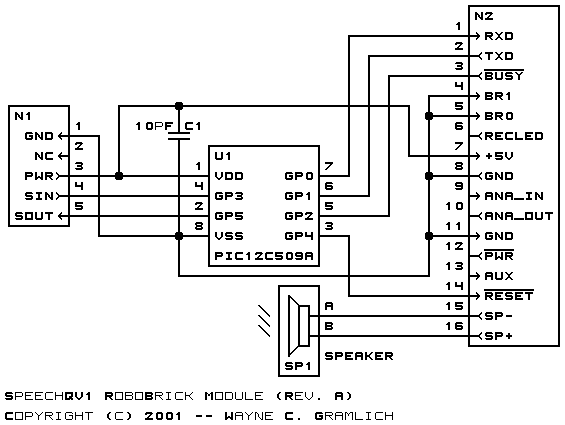
This is the Revision A version of the SpeechQV RoboBrick. The status of this project is work in progress.
This document is also available as a PDF document.
The SpeechQV1 RoboBrick is used to output synthesized speech. It uses the Quadravox QV306M4-TTS module.
This module requires that a piece of text be entered
into a text to diphone converter. The Quadravox
documentation gives a good 60 second overview of
what diphones are and why they are used in speech
synthesis. Quadravox provides a text to diphone
converter that runs on the Windows®
operating system with the purchase of QV306-TTS
module. The Quadravox software is based on the
t2a software written by Tom Jennings
that is currently available at
http://www.wps.com/products/Story-Teller/technical/T2A/.
(Tom's version is based on some software written by
John Wasser.) Once the text has been converted to
diphones, the diphone sequences are downloaded into
the SpeechQV1 RoboBrick for eventual output as
synthesized speech using the QV306M4-TTS module.
There is no programming specification yet.
The hardware consists of a circuit schematic and a printed circuit board.
The SpeechQV1 RoboBrick schematic is shown below:
This board requires a special cable that connects the 2×8 header on the RoboBrick (N2) to the 1×16 header on the QV306M4-TTS.
The parts list kept in a separate file -- speechqv1.ptl.
The available printed circuit boards are listed below:
There is no software yet.
The following fabrication issues came up: